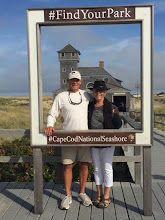Once I bit the bullet and ordered the kit from Chesapeake Light Craft (CLC), I set out gathering tools and equipment I would need. In that process I found several businesses that I never knew were in San Antonio. One of those places is Harbor Freight. (great prices on tool, gloves, clamps, sandpaper, etc.) I should have signed up for their frequent shopper card. Another neat store is Woodcraft, a specialty shop for wood workers. They have all sorts of neat things to buy, and they gave me 3 bags of wood flour (that's a fancy name for fine sawdust). One of my most favorite new finds is Schnabel's True Value. There you can buy copper wire. But more importantly one washer, if one is all you need. What a concept! I have also picked up lot's of scrap lumber and other materials that have been useful at the Habitat for Humanity store.
Before the crate arrived I ordered books on boat building and books about epoxy. I read everything I could find about both subjects on the internet. I thought I had a good idea of what I was getting into, but when the crate arrived and we opened it on the garage floor and took out the check off sheet I was overwhelmed. My mind is saying "maybe I should just send it back." I had no idea what was what. The manual is okay, but it assumes that you know more than I did or still do. I was able to figure what parts would eventually become the deck and which were for the hull.
The first thing you have to do is glue the boards together that will make up the bottom, sides and sheer panels. So you figure out what goes with what (nothing is marked) making sure that that the matching panels are laid out as mirror images to make right and left sides of the kayak. It is like putting a jigsaw puzzle together. The puzzle joints are then epoxied together.
Now about epoxy. This is a new language for me. Resin, hardener (fast,slow or moderate) thickener? Consistency of mustard or ketchup or peanut butter? Green stage, wet out, fill the weave? Remembering the ratios for mixing it all just right, and getting it all done at just the right temperature somewhere between 60 and 90 degrees. And get it all done before it sets up in your cup making a good hockey puck. (How many do you want me to send you?) Like lot's of things a little knowledge can get you in big trouble and even when the chemistry is right timing is critical.
Again the directions are somewhat vague. For example for this first job it called for mixing a small batch of epoxy. Small batch? Not so many ounces or cups but a small batch. Thanks to a very helpful builders forum on CLC web site I got a quick answer. I think that was my first question but there have been many more since.
On December 23, 2009 I glued the first of the puzzle pieces together.





















